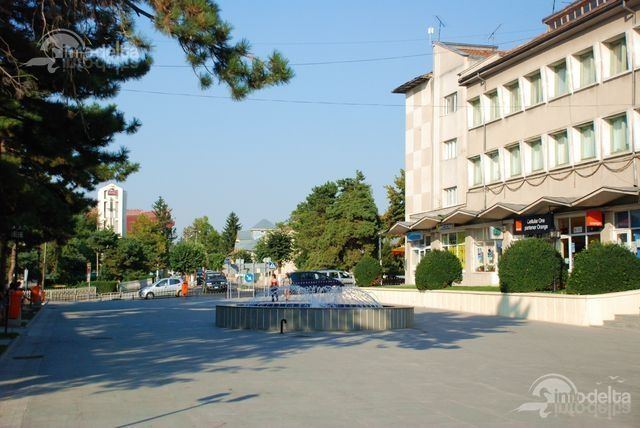Climate Cfa Population 8,245 (2011) | Time zone EET (UTC+2) Area 44 km² Local time Thursday 9:15 PM | |
 | ||
Weather 9°C, Wind SE at 11 km/h, 56% Humidity | ||
Măcin ([məˈt͡ʃin]; Turkish: Maçin) is a town in Tulcea County, in the Dobrudja region of Romania.
Contents
Map of M%C4%83cin, Romania
Location
Măcin is located in the north-western part of the Dobrudja region, in Tulcea County. The city is located at the intersection of the DN22 (E87) and DN22D national roads. The DN22 road links it to the Romanian capital, Bucharest (230 km to the West, via Brăila) and to cities of Isaccea and Tulcea (to the East). The DN22D road connects Măcin through a southern route with Tulcea and Constanţa. According to the 2011 census, the population numbered 7,666 inhabitants, composed of 91.46% Romanians, 4.8% Roma, 2.92% Turks and 0.37% Russian Lipovans.
History
The town is located on an ancient Celtic settlement, named Arrubium. It was then included in the Getic polities of Rhemaxos and Zyraxes, then conquered by the Roman Empire, which stationed a cavalry unit in this place between 99 and 241 AD. The ruins of the old Roman fortifications, could be seen today on the top of "Cetate" Hill. Part of the Bulgarian, Byzantine and later Ottoman Empire, it was included for some time in the Wallachian and Moldavian voivodates.
It was the site of the Battle of Măcin in 1791.
Economy
The main share of the local economy is taken by agriculture, especially animal husbandry, cereal growing and in less extent, fishing. Industry is centered on surface mining - extraction of granite rocks, from quarries situated on southern slopes of Măcin Mountains, while light industries like textile and clothing manufacturing are still well represented. A large part of city and surroundings population (especially women) is involved in textile industry. In the manufacturing sector one could also mention about the factory of electrostatic air purifiers and ventilation systems.
Since mid-2000s, the wine industry has grown in importance, as new vineyards have been planted on Carcaliu Hill along DJ222L road, six kilometers outside city limits to the southeast. The local wine producer sells white and red wines with the "D.O.C." designation, "Controlled term of origin", from Sarica-Niculițel region.
The town has also an "inland port" on the Danube, operated by two local fixed cranes and sometimes depending on the freight fluxes, by additional floating cranes brought in from Brăila. The port has grain-handling and some warehousing facilities.
Education
"Nifon Bălășescu" school (ex "Scoala generala nr. 1") and "Gheorghe Banea" school (ex "Scoala generala nr. 2")
Natives
Twin towns — sister cities
Măcin is twinned with:
